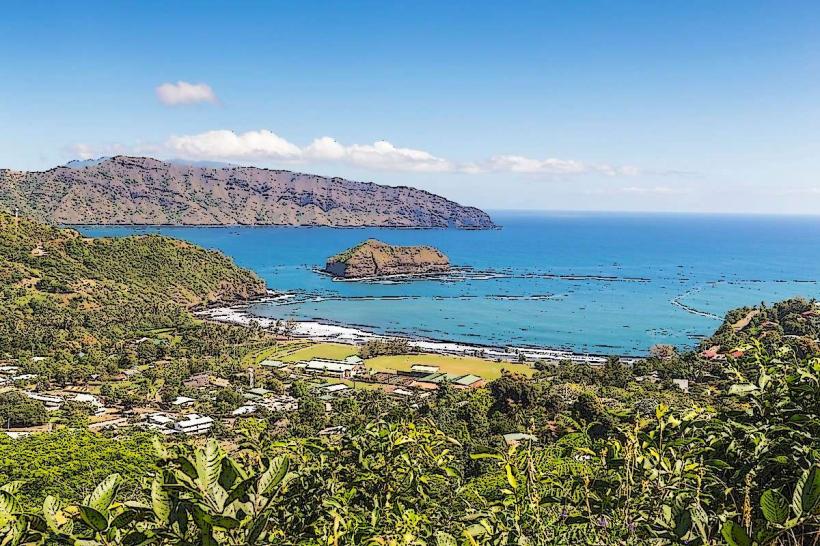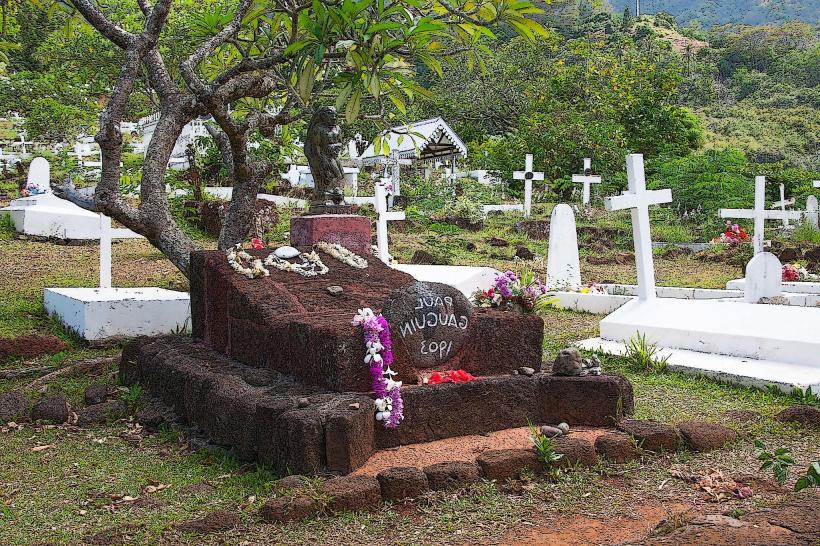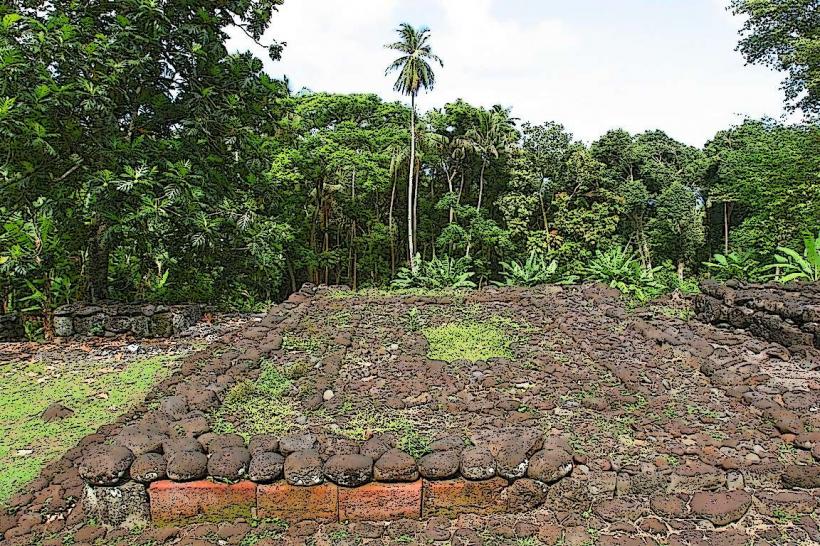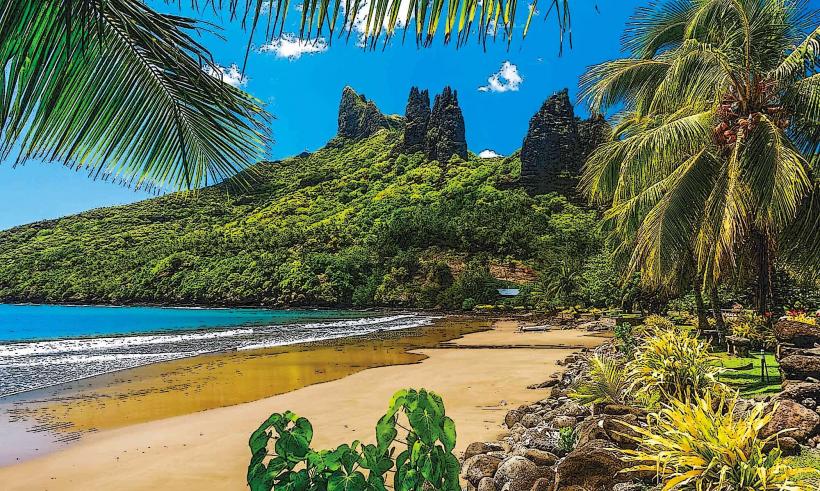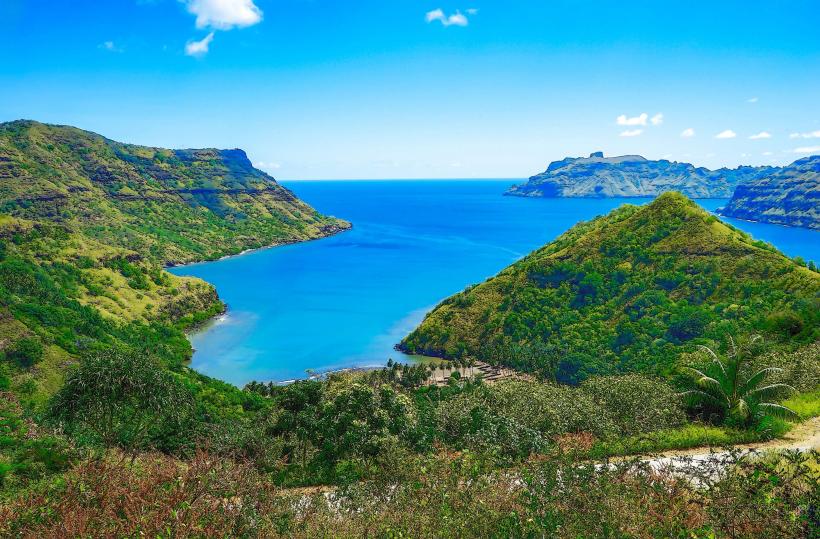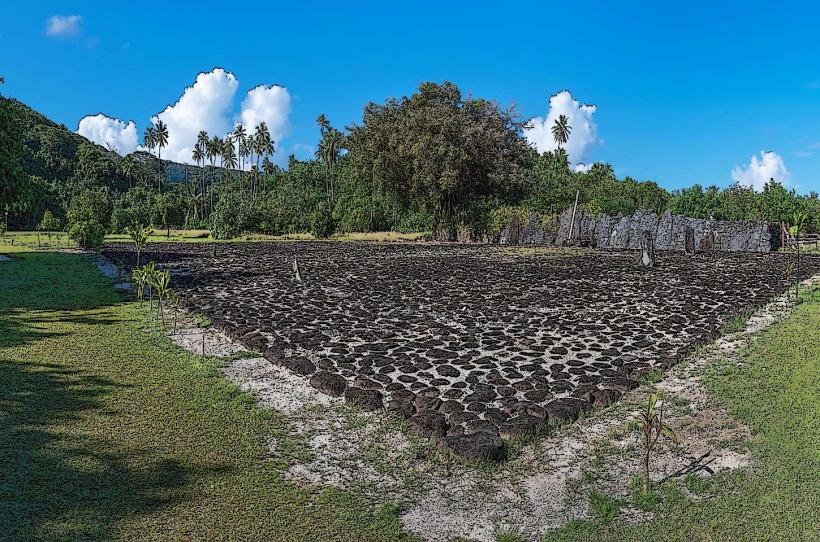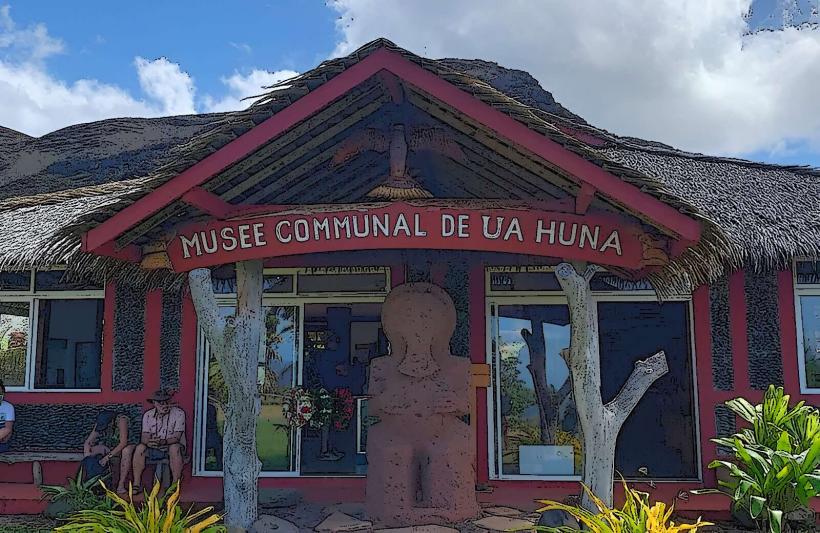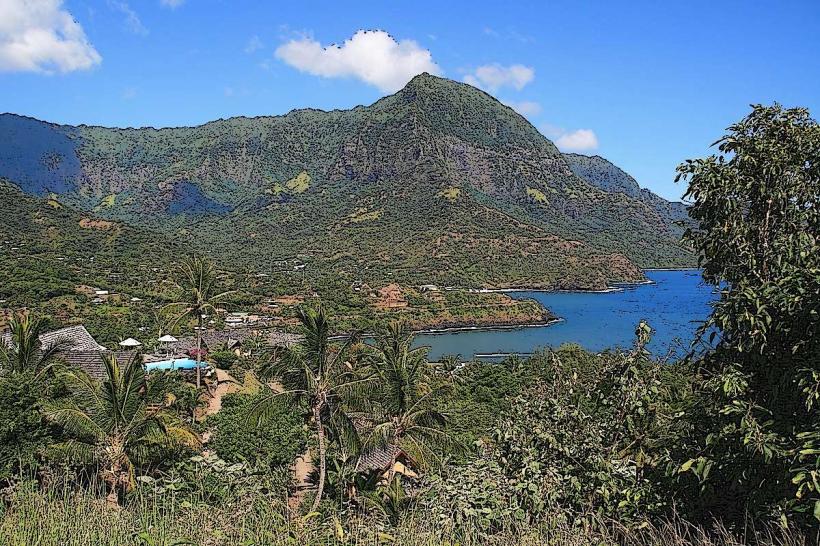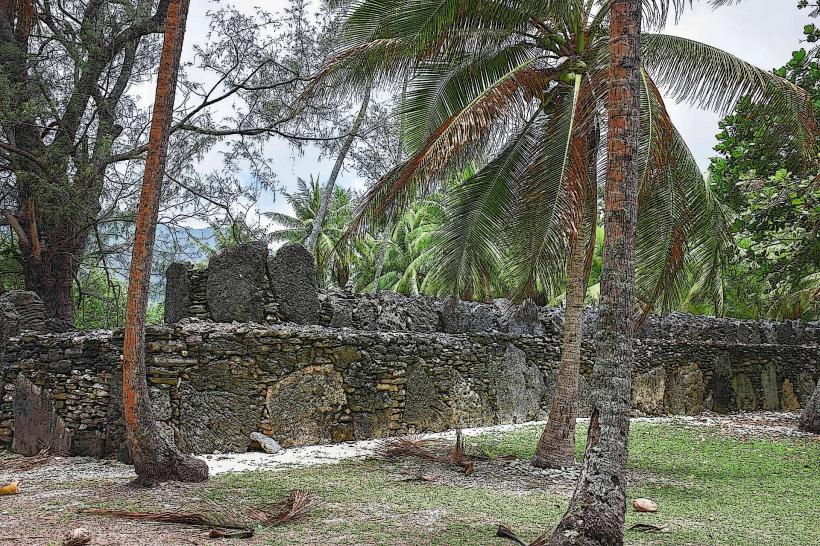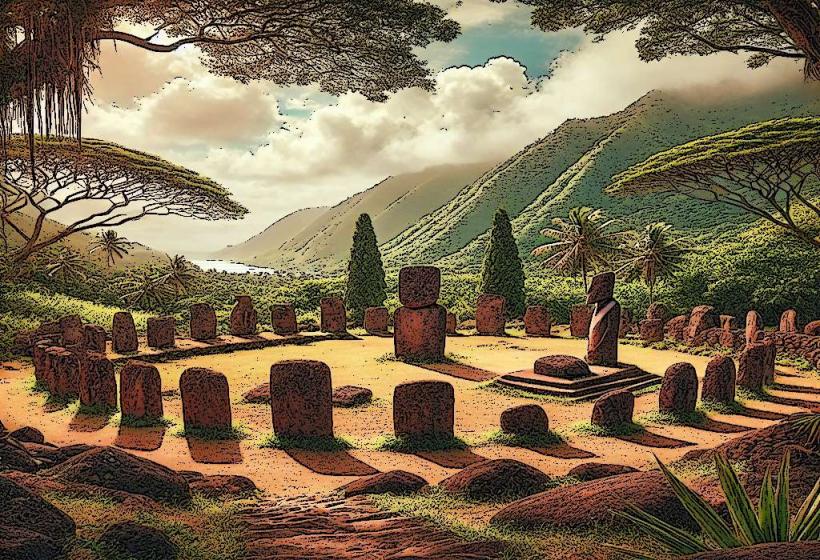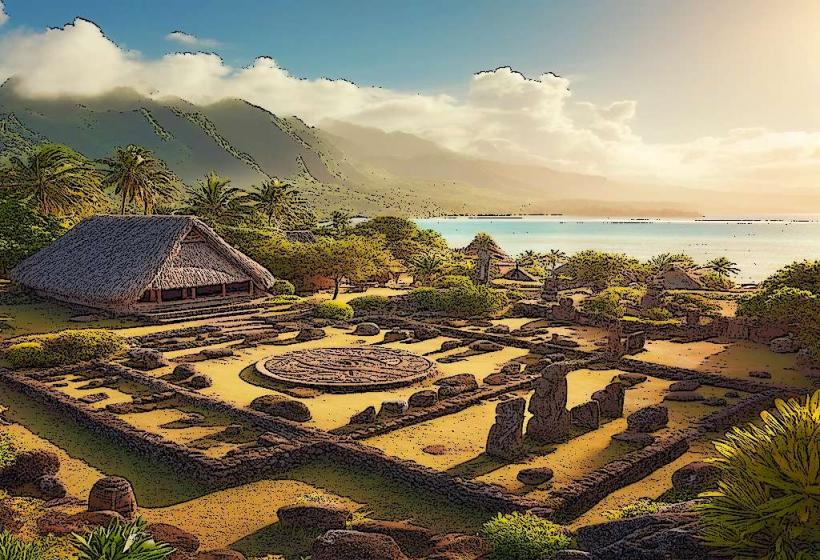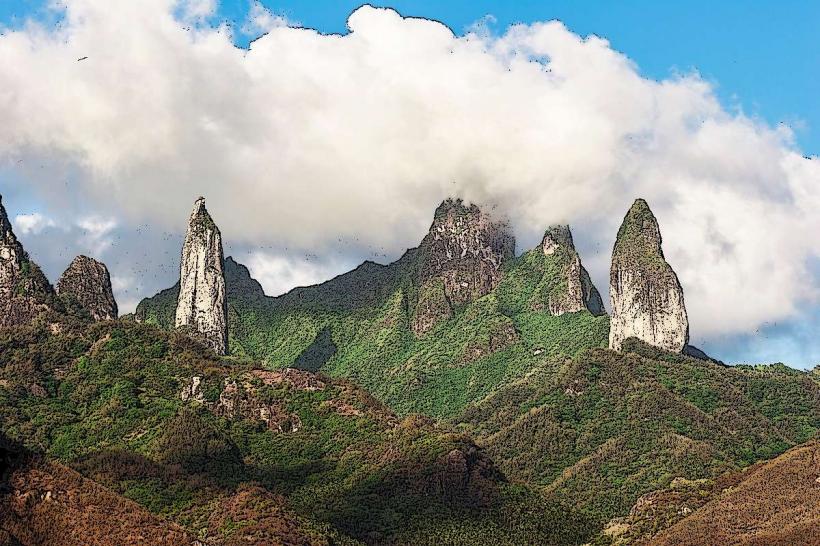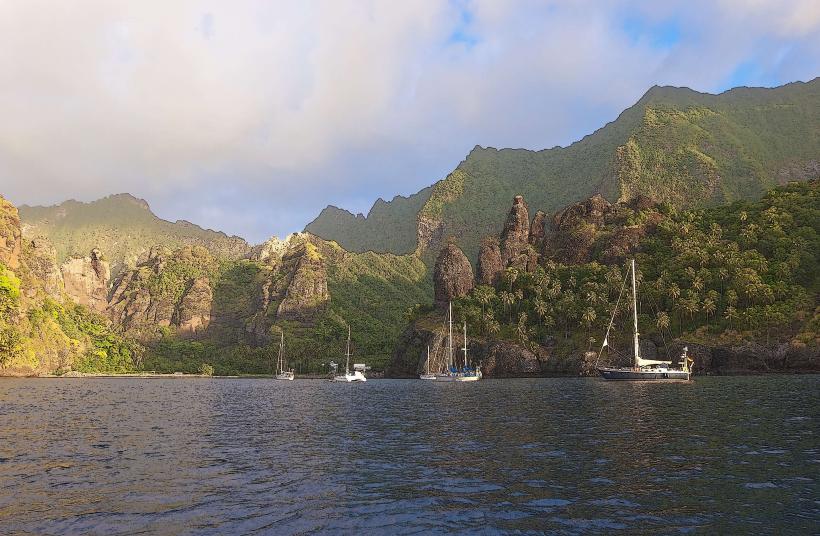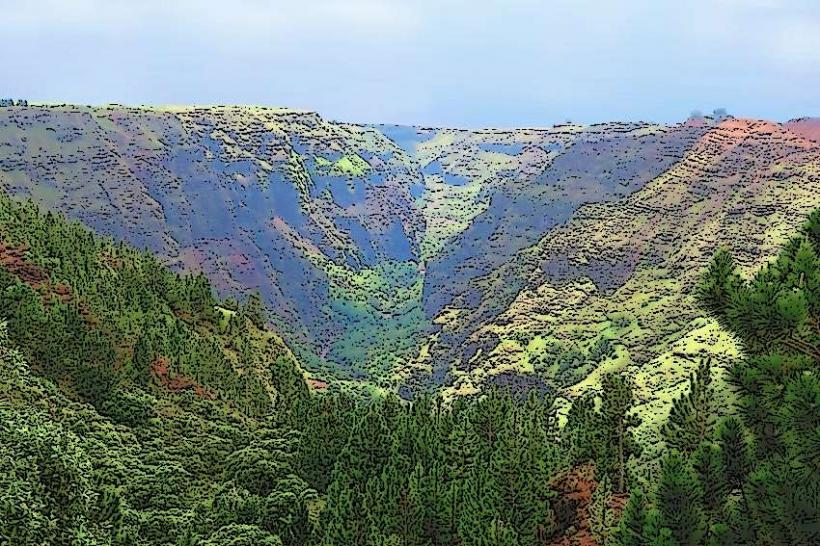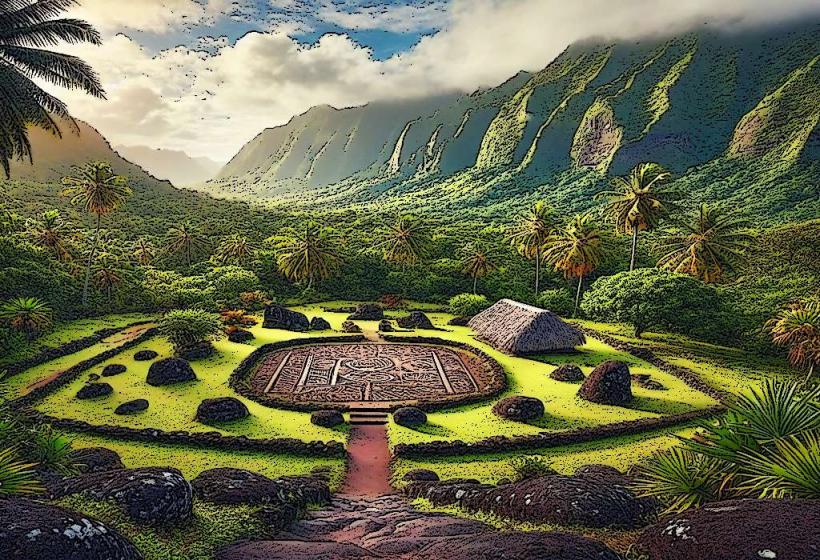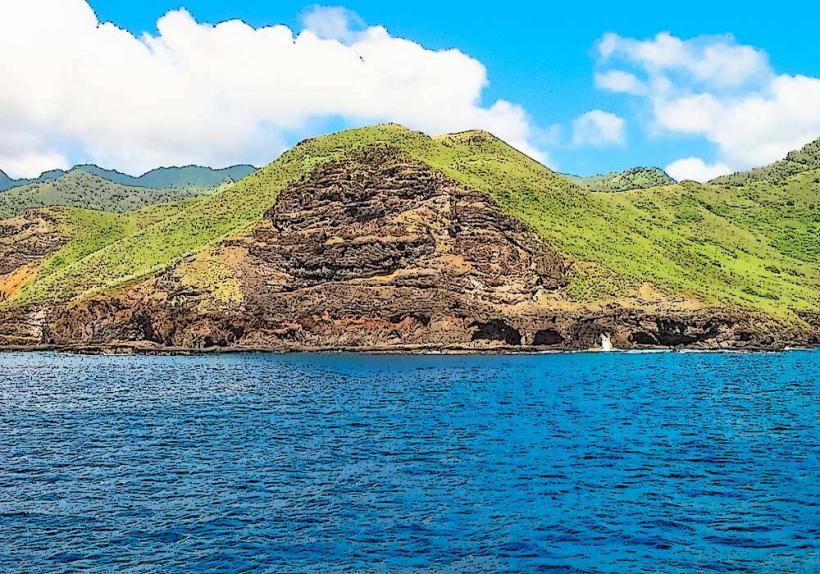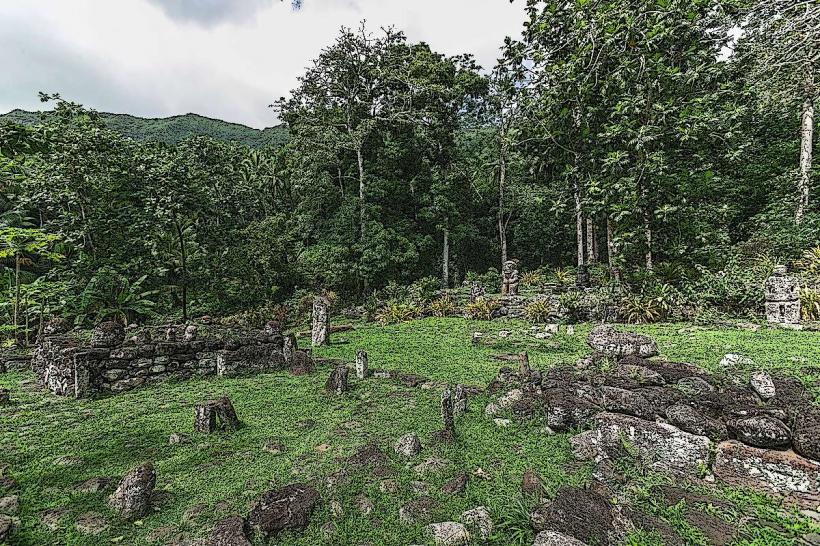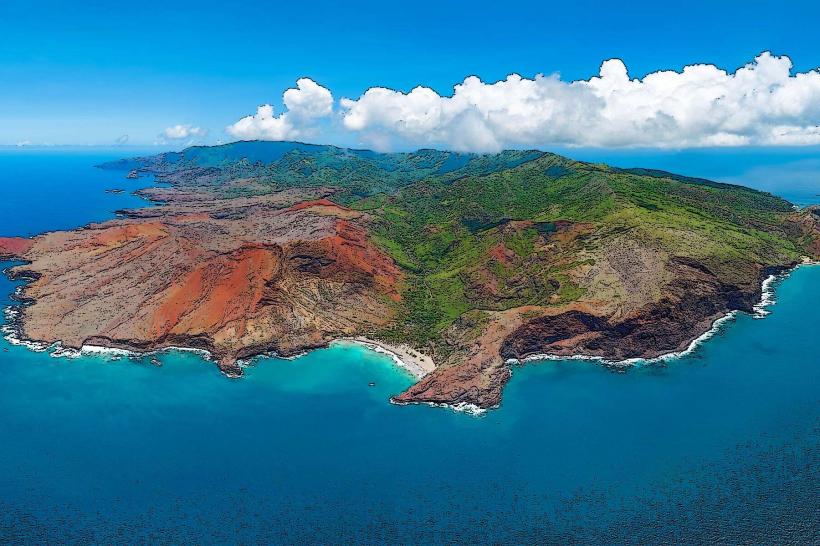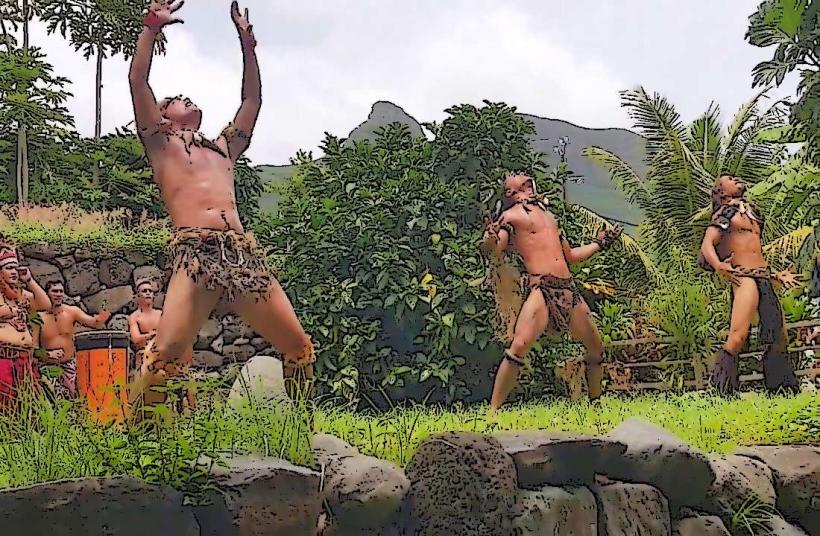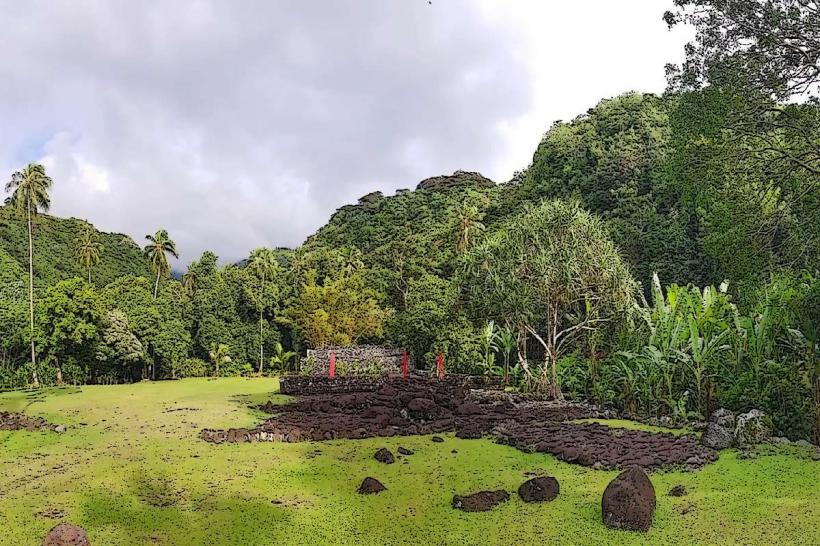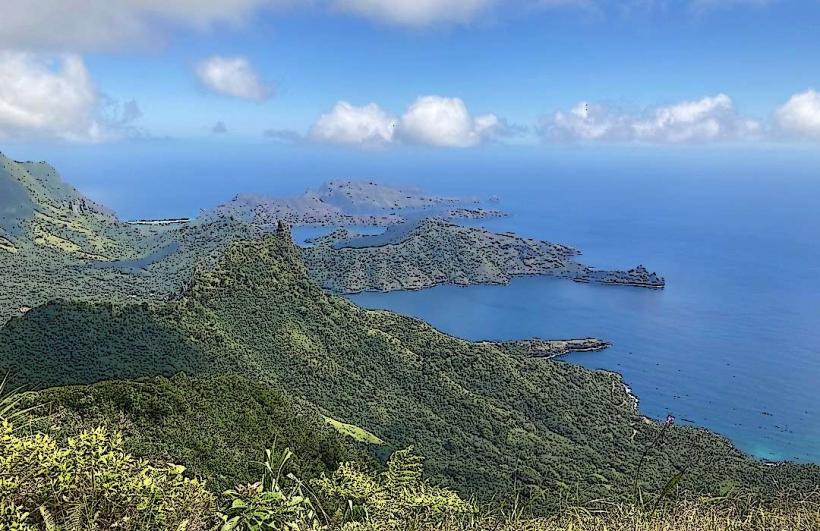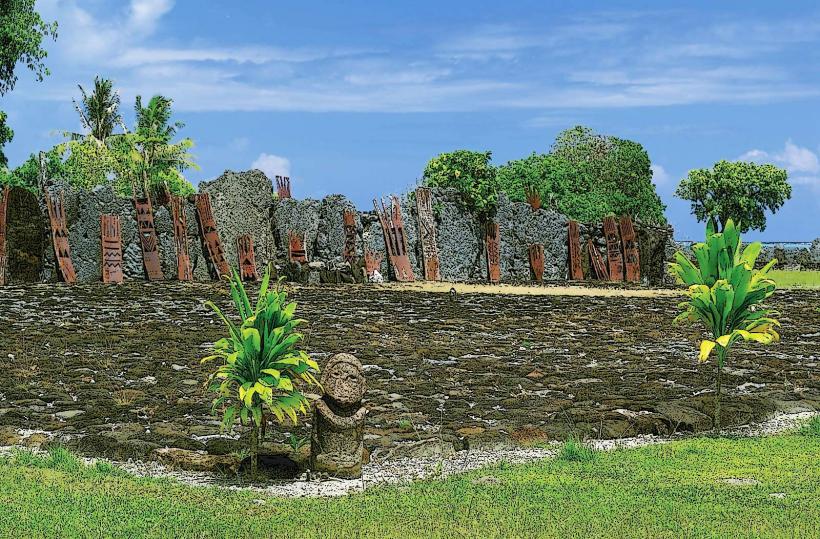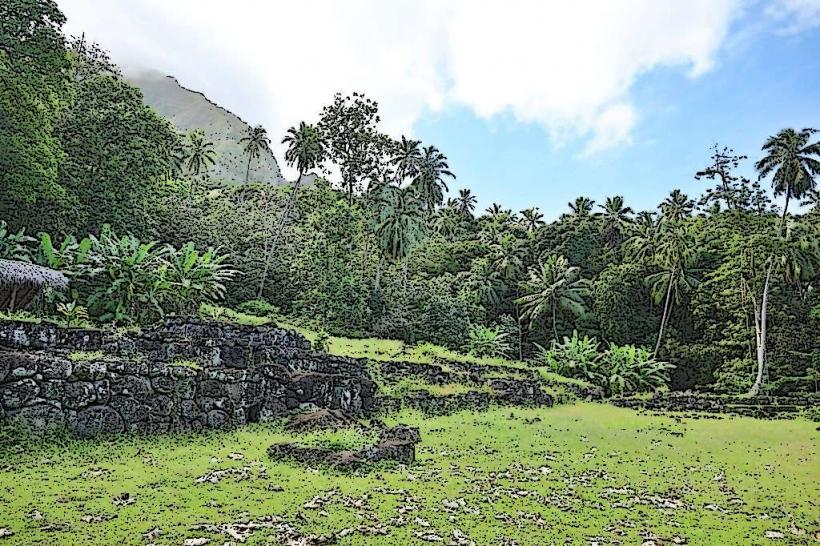Information
Landmark: Marae KakaeCity: Marquesas Islands
Country: French Polynesia
Continent: Australia
Marae Kakae is another significant marae (ancient Polynesian ceremonial site) located on Nuku Hiva in the Marquesas Islands of French Polynesia. Like other maraes across the Polynesian islands, Marae Kakae was used for religious ceremonies and cultural practices, offering visitors a window into the ancient traditions of the Marquesan people.
Historical and Cultural Significance
Religious Site: Marae Kakae was primarily used for ceremonial purposes, including offerings, sacrifices, and religious rites dedicated to various gods and deities. In particular, it is believed to have been linked to the worship of ʻOro, the god of war and fertility, who was central to many Polynesian communities in the Marquesas Islands. Like other maraes, it would have served as a sacred gathering space for the community, where leaders and priests performed rituals to ensure prosperity, fertility, and protection.
Spiritual and Cultural Connections: The Marquesan people had a deep spiritual connection to their maraes, seeing them as more than just ceremonial spaces; they were also seen as the dwelling places of spirits and gods. Marae Kakae would have been a key location for the practice of these ancestral customs, helping to maintain the cultural continuity of the Marquesas.
Social and Political Importance: Maraes were often focal points of social and political life, where community decisions were made, and tribal leaders ("arii") gathered for important events. While the primary function of Marae Kakae was religious, it may have also played a role in reinforcing the structure of Marquesan society by gathering important figures to make critical decisions for the community.
Architectural Features
Stone Platforms and Altars: Like other maraes in Polynesia, Marae Kakae is characterized by large stone platforms and altars. These structures were used to conduct rituals, including animal or food offerings, and may have been designed to hold or display sacred objects. The layout typically includes a central altar, possibly surrounded by smaller platforms or stone markers.
Tiki Statues and Carvings: Marae Kakae may also have contained carved tiki statues and petroglyphs similar to those found in other Marquesan archaeological sites. These carvings were often created to honor gods or ancestors, serving as both religious symbols and artistic expressions of the island’s culture. Tiki statues, often made from stone or wood, would have been considered sacred, housing the spirit of deities or ancestors.
Marae Layout: The marae would have been carefully designed, following traditional Polynesian architectural practices. The arrangement of the stones and platforms was symbolic and designed for ceremonial purposes. The site might have been oriented to align with celestial or natural phenomena, reflecting the Marquesan people’s understanding of the environment and their connection to the heavens.
Archaeological Findings
Excavations: Archaeological research in the Marquesas Islands, including at Marae Kakae, has uncovered numerous tools, pottery, and other artifacts that help piece together the history and practices of the ancient Polynesian people. These artifacts give insight into the daily lives of the Marquesans, as well as their religious and ceremonial practices. While Marae Kakae is less well-known than other sites like Marae Taputapuātea, it is still an important archaeological location in the Marquesas.
Restoration and Preservation: Like other ancient sites in the Marquesas, Marae Kakae has undergone efforts to preserve and restore the stone platforms and other features of the site. While not as extensively restored as some other maraes, efforts are being made to ensure the protection of the site from further erosion or damage.
Visiting Marae Kakae
Location: Marae Kakae is located on Nuku Hiva, accessible from the main village of Taiohae. The site is situated in a scenic area surrounded by lush vegetation and volcanic landscapes, offering visitors both a cultural experience and beautiful natural views.
Guided Tours: Given its historical and cultural importance, visiting Marae Kakae can be more enriching with a guided tour. Local guides, often from the Marquesan community, can provide deeper insights into the religious, social, and historical context of the site, explaining the significance of the stone platforms, carvings, and rituals that took place here.
Respect for the Site: Visitors are asked to treat Marae Kakae with respect, as it is a sacred site. This means refraining from disturbing the area, not removing any artifacts, and following any specific guidelines provided by local authorities or guides. Preservation is key to maintaining the site for future generations.
Why Visit Marae Kakae?
Cultural Immersion: Visiting Marae Kakae provides an opportunity to immerse yourself in the ancient spiritual and cultural practices of the Marquesan people. The site offers insight into how the Marquesans connected with the divine and the role of maraes in their social and political life.
Archaeological and Historical Insights: The site is valuable for those interested in archaeology and history, offering a glimpse into the traditional Polynesian lifestyle and religious beliefs. Understanding the structure and purpose of Marae Kakae deepens our appreciation for the sophistication of ancient Polynesian societies.
Scenic Surroundings: The location of the marae offers breathtaking views of the natural beauty of Nuku Hiva, with volcanic hills, lush valleys, and rugged coastline surrounding the site. Visitors to Marae Kakae can enjoy the peaceful and reflective atmosphere while exploring the ancient stone structures.
Conclusion
Marae Kakae is an important site for understanding the religious, social, and cultural heritage of the Marquesas Islands. Like other maraes in Polynesia, it reflects the connection between the Marquesan people and the gods, the land, and their ancestors. For visitors interested in exploring the depth of Polynesian history, a visit to Marae Kakae provides a unique opportunity to connect with the island's rich cultural past.

